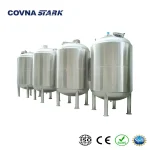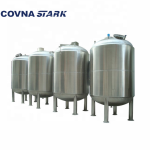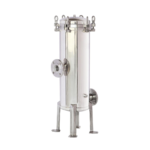Once seen as a regional or environmental issue, water scarcity has rapidly evolved into a global business risk—especially for industrial manufacturers. As freshwater becomes increasingly limited, factories face not only higher operating costs but also supply chain disruptions, regulatory hurdles, and reputational pressure.
From textile producers in Southeast Asia to power plants in the Middle East, industries around the world are being forced to reassess how they source, use, and recycle water. Ignoring the impact of water scarcity is no longer an option—it’s a strategic blind spot that can threaten production continuity and long-term profitability.
In this article, we’ll explore the key drivers behind industrial water stress, the real-world consequences for manufacturers, and the proactive measures companies can take to build resilience in the face of growing scarcity.
Drivers of Industrial Water Scarcity
Industrial water scarcity is no longer confined to drought-prone regions. It’s the outcome of multiple accelerating global trends that collectively strain freshwater resources across continents.
- Climate Change: Altered rainfall patterns, more frequent droughts, and shrinking aquifers are directly impacting freshwater availability in industrial zones worldwide.
- Urbanization & Population Growth: As cities expand, industrial zones increasingly compete with residential and agricultural users for the same water supply.
- Industrial Clustering: Many manufacturing hubs—especially in Southeast Asia and North Africa—have seen rapid growth without proportional water infrastructure development, leading to chronic over-extraction.
- Regulatory Evolution: Governments are tightening water allocation and discharge policies, leaving less room for inefficient water use or outdated systems.
Together, these forces are shifting water from a low-cost commodity to a constrained resource with real operational consequences for manufacturers.
Direct Impacts on Manufacturers
When water scarcity becomes part of the operational equation, manufacturers face challenges that go far beyond rising utility bills. The effects can be immediate, disruptive, and financially damaging.
- Rationing and Supply Interruptions: In some regions, governments have imposed water use limits or redirected municipal supplies away from industry, forcing unexpected production slowdowns or shutdowns.
- Rising Water Procurement Costs: As demand rises and availability falls, water becomes more expensive—especially when companies must resort to tankers, drilling, or treated third-party sources.
- Cooling and Process Instability: In sectors like power generation, metal processing, or food manufacturing, insufficient water flow disrupts temperature control and process consistency.
- Expansion Limitations: Companies looking to scale operations in water-stressed areas often face permit delays or outright bans due to infrastructure or resource constraints.
These challenges are particularly acute for manufacturers operating in water-intensive industries or in geographies already flagged as high risk for physical water stress.
Industry Examples: Who’s at Risk and Why?
While all manufacturers rely on water to some extent, certain industries are far more vulnerable to water scarcity due to their heavy usage or stringent quality requirements.
- Textile and Dyeing: This sector uses enormous volumes of water for washing, dyeing, and finishing fabrics. In Southeast Asia, water shortages have already triggered operational constraints and stricter environmental enforcement.
- Semiconductor and Electronics: These industries demand ultra-pure water for wafer cleaning and process integrity. Even minor disruptions in water quality or quantity can lead to massive production losses.
- Chemical and Petrochemical: Water plays a role in cooling, dilution, and reaction processes. Scarcity here can compromise both safety and productivity.
- Food and Beverage: From processing to sanitation, this industry relies on consistent water quality. Reduced supply or contamination can trigger recalls or regulatory actions.
- Power Generation: Thermal power plants need vast amounts of cooling water. In arid regions, this has led to derated capacity or forced shutdowns.
For these industries, water scarcity isn’t just a utility issue—it’s a strategic vulnerability that must be addressed with robust planning and infrastructure investments.
Regulatory Landscape and ESG Expectations
As water becomes scarcer, governments and investors alike are raising the bar for how manufacturers manage their water use, discharge, and reporting.
- Stricter Discharge Standards: Regulatory bodies in regions like the EU, Middle East, and Southeast Asia are enforcing tighter limits on contaminants such as COD, TDS, and heavy metals, especially for industries discharging into public waterways.
- Permit Dependencies: Water extraction and discharge permits are increasingly tied to demonstrated efficiency, monitoring, and investment in treatment infrastructure.
- Mandatory Reporting: Environmental disclosure frameworks—such as GRI and CDP—now require detailed tracking of industrial water usage, reuse ratios, and discharge quality.
- Investor Scrutiny: ESG-driven funds and corporate buyers are demanding transparent water stewardship as part of vendor evaluation and sustainability scoring.
Manufacturers that delay adapting to these evolving expectations may face not only fines and audits, but also damaged relationships with clients, investors, and regulators.
Mitigation Strategies: How Leading Companies Are Responding
Forward-thinking manufacturers are not waiting for water crises to force action. They’re proactively investing in technologies and operational frameworks that reduce dependency on freshwater while improving resilience.
- Advanced Filtration and RO Systems: Industrial facilities are implementing multi-stage filtration and reverse osmosis systems to treat groundwater, surface water, or even wastewater for reuse—cutting down fresh intake by up to 70% in some cases.
- Zero Liquid Discharge (ZLD): In heavily regulated regions, some plants are moving toward ZLD systems that eliminate wastewater altogether, reclaiming nearly all water used in operations.
- Smart Monitoring: Digital water meters and IoT-enabled sensors allow for real-time tracking of usage, pressure anomalies, and leak detection, helping optimize water consumption at a granular level.
- Water Recycling Loops: Closed-loop systems in cooling, rinsing, and cleaning processes are being retrofitted to recycle and reuse water multiple times within the facility.
- Supplier Audits and Training: Large manufacturers are also cascading water-efficiency expectations down their supply chains through audits, scorecards, and training programs.
These strategies not only reduce physical water risk, but also support long-term cost savings, regulatory compliance, and sustainability reputation in the global market.
Conclusion: Managing Water Risk is Now a Business Imperative
Water scarcity is no longer a distant environmental concern—it’s a present-day operational risk for manufacturers worldwide. From rising costs and regulatory exposure to reputational damage, the hidden impacts of inefficient water management are far-reaching.
Leading companies are responding with smarter infrastructure, improved water reuse, and long-term planning. If your facility is located in a water-stressed region or heavily reliant on consistent water supply, now is the time to act.
At STARK, we support industrial clients with advanced mechanical filtration solutions and expert guidance on building water resilience across operations.
Let’s assess your current risk profile and design a mitigation plan tailored to your facility. Contact us today for a one-on-one consultation.





